Google Cloud Load Balancer
Last Updated :
12 Dec, 2023
In todays fast-paced virtual world, making sure your web programs are accessible , reliable, and responsive is critical. One of the key components to obtain this goal is a good load balancing. Google Cloud Load Balancer is a powerful tool offered by Google Cloud Platform (GCP) that distributes incoming network site visitors throughout multiple servers to make sure no single server is crushed, thereby optimizing your software’s performance. In this newsletter, we will discover the features, benefits, and best practices associated with Google Cloud Load Balancer.
What is Google Cloud Load Balancer
Google Cloud Load Balancer is a completely-distributed, software-described managed provider that allows you to distribute incoming network traffic throughout more than one backend times or services. It operates at the worldwide level, permitting you to balance site visitors throughout different areas and zones. Google Cloud Load Balancer offers several sorts to cater to various application needs:
- HTTP(S) Load Balancing: Ideal for serving HTTP and HTTPS visitors, this load balancer can distribute requests based totally on content material, making it perfect for web applications and websites.
- TCP/UDP Load Balancing: This type is designed for non-HTTP(S) site visitors, making it suitable for protocols like SMTP, FTP, DNS, and greater. It ensures that network traffic is evenly dispensed throughout backend instances.
- Internal Load Balancing: It is used to distribute visitors inside a Virtual Private Cloud (VPC) network, permitting you to balance traffic among times that aren’t exposed to the public internet.
Benefits of Google Cloud Load Balancer
- High Availability: Google Cloud Load Balancer complements the reliability of your applications via dispensing traffic throughout multiple times and regions. If one instance or area fails, visitors is automatically redirected to healthy instances, making sure excessive availability.
- Scalability: Load balancers are critical for handling increased visitors. Google Cloud Load Balancer can scale elastically to manage several hundreds all through peak times and minimize at some point of intervals of low visitors, ensuring efficient useful resource usage.
- Global Load Balancing: By dispensing visitors throughout multiple regions, Google Cloud Load Balancer affords low-latency access in your applications, unless users geographical location.
- Security: Load balancers offer Distributed Denial of Service (DDoS) protection through absorbing and mitigating attacks, safeguarding your packages from potential threats.
- SSL/TLS Termination: Google Cloud Load Balancer can handle SSL/TLS termination, offloading the resource intensive encryption and decryption processes from your backend instance, for that reason improving performance.
Steps To Configure cloud load balancer
Step 1: Create a Google Cloud Project
If you haven’t already, create a new project in Google Cloud Platform. You can do this from the Google Cloud Console.
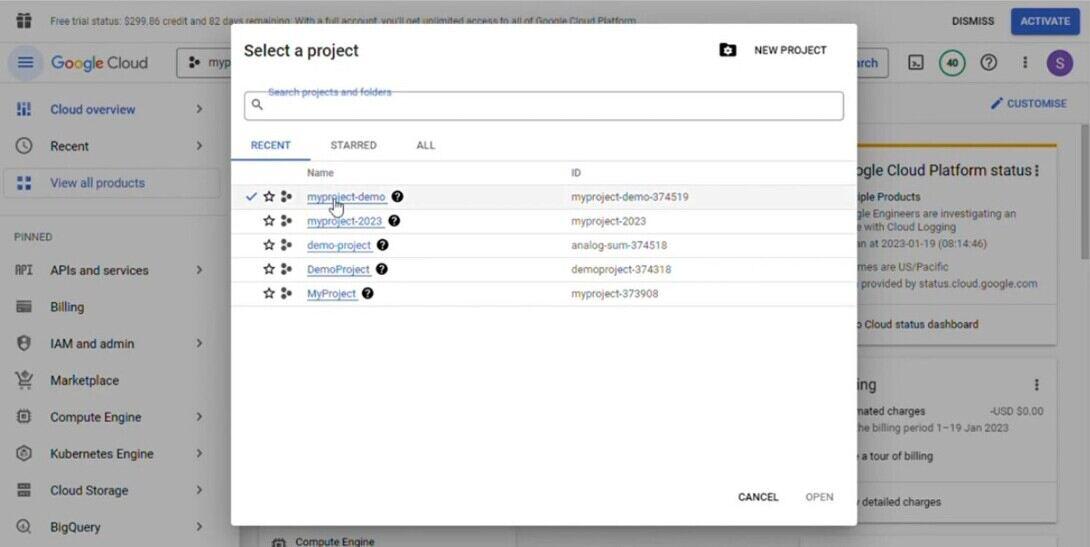
Select your Project
Step 2: Enable Necessary APIs
Make sure the Compute Engine API and the Cloud Load Balancing API are enabled for your project. You can allow APIs from the “APIs & Services” > “Dashboard” phase of the Cloud Console.
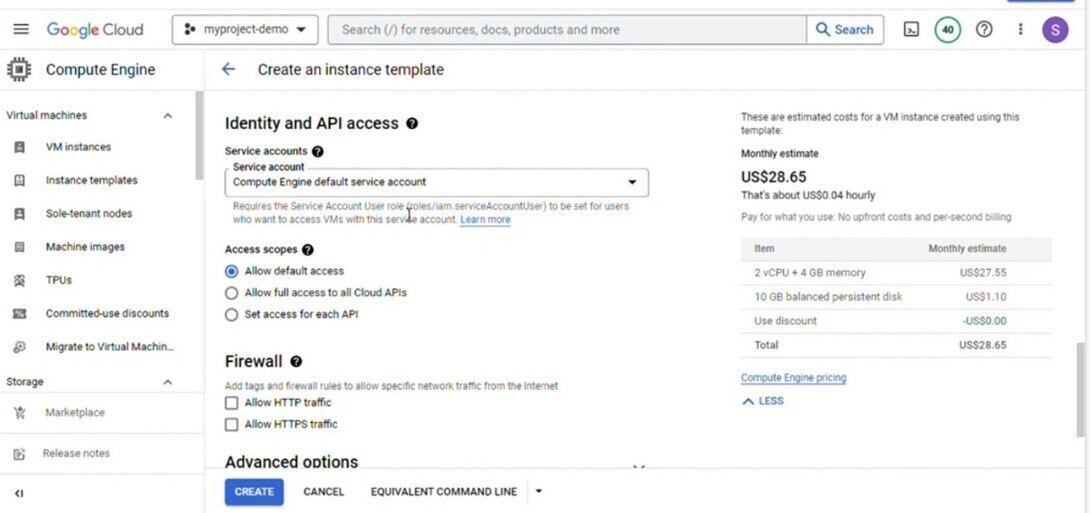
Step 3: Create Backend Services
Navigate to the “Compute Engine” segment within the Cloud Console.Click on “Backend services” under the “Load balancing” category.Click “Create Backend Service”.

Create backend service
Configure your backend service with the aid of specifying the backend instances and settings. You can pick out instances, specify balancing mode, session affinity, and so forth.
Step 4: Create Instance Groups
Still inside the “Compute Engine” section, click on “Instance groups”.
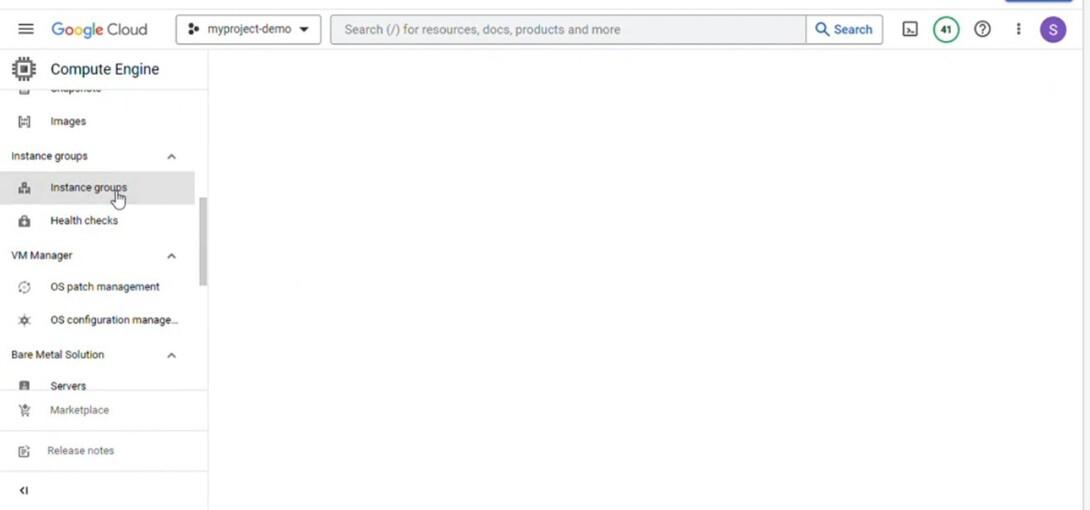
Cliick on instance group
Click “Create Instance Group”.Add instances to the instance group. This can be completed by way of specifying individual VM instances, managed instance group, or unmanaged instance groups.
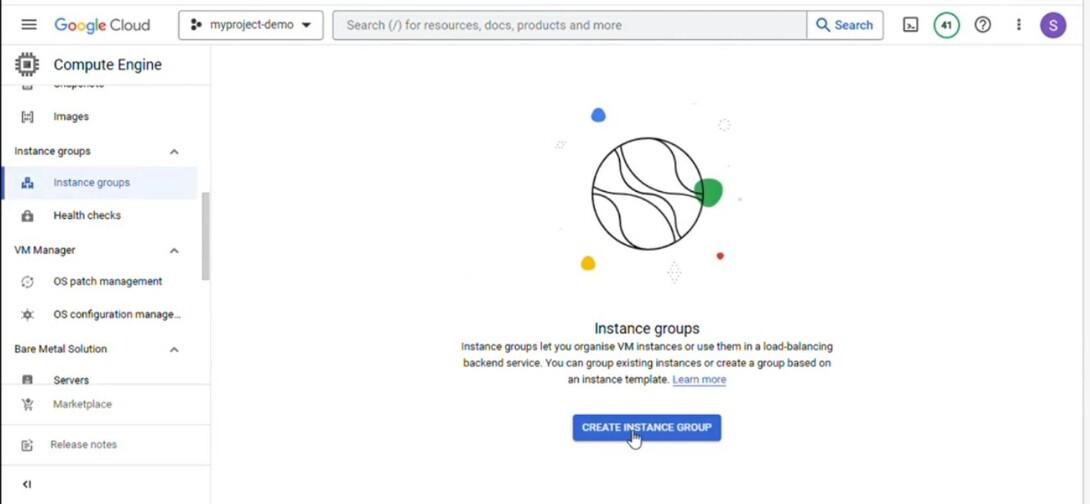
Step 5: Set Up Health Checks
Health checks make certain that the instance for your instance group are healthful and available to visitors.Under the “Compute Engine” section, click on on “Health checks”.Click “Create a health check” and configure it according to your requirements.
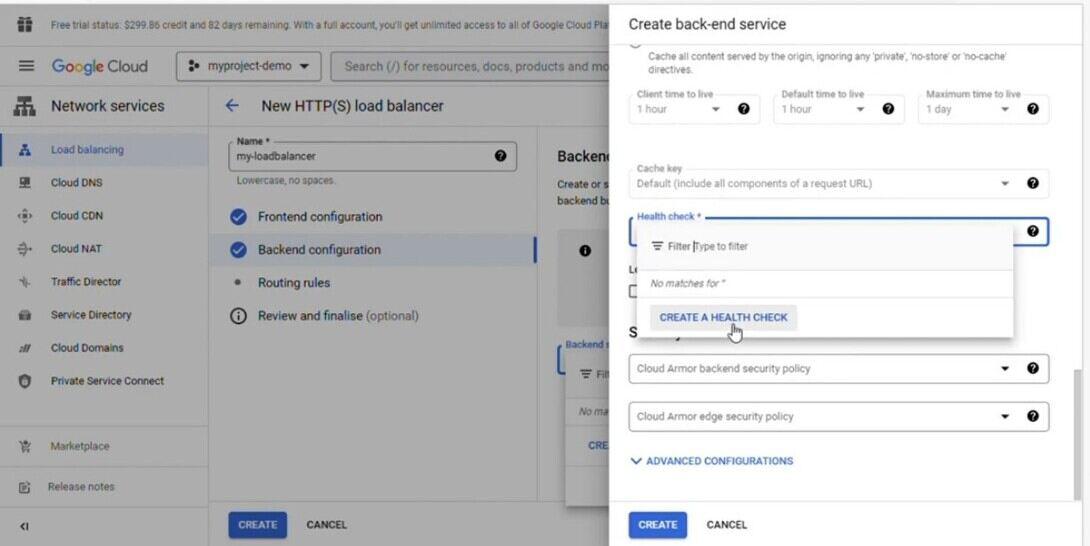
Create health check
Step 6: Create a Load Balancer
Go to “Load balancing” in the Cloud Console.
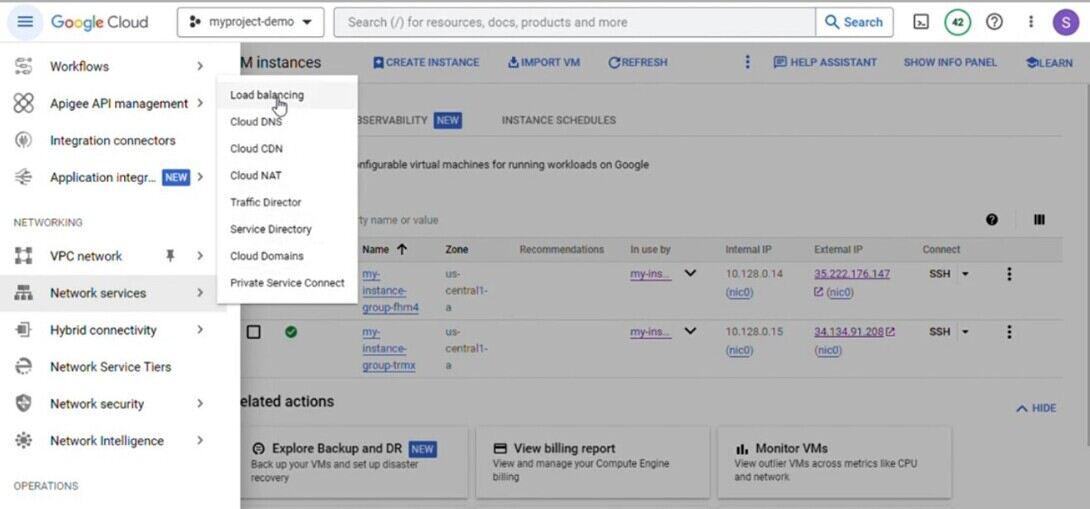
click on load balacing
Click “Create a load balancer”.

Click on load balancing
Choose the type of load balancer you want: “HTTP(S) Load Balancing” for web programs, “TCP/UDP Load Balancing” for non-HTTP traffic, or “Internal Load Balancing” for private/internal services.

Choose the type of load balancer
Configure your frontend and backend settings. For example, in HTTP(S) Load Balancing, you will specify frontend IP and port configurations, and hyperlink them on your backend provider and health check.

Configure your frontend and backend
Step 7: Configure DNS
If you’re using a global load balancer, you may need to configure your DNS settings to point to the load balancer’s IP address.
Step 8: Testing and Monitoring
Test your load balancer to make certain traffic is distributed as predicted. You can use tools like cURL or on-line services to simulate visitors. Also, monitor your load balancer’s performance the use of Google Cloud Monitoring and Logging.
Step 9: Scaling and Optimization
Based to your application’s demand, configure auto-scaling policies for your instances. This ensures that your backend instances can deal with various tiers of visitors correctly.
Best Practices for Using Google Cloud Load Balancer
- Health Checks: Regularly configure health checks to reveal the reputation of your backend times. This ensures that visitors is best directed to healthy instances, enhancing the overall reliability of your application.
- Optimized Backend Instances: Ensure your backend instances are optimized for performance. Utilize Google Compute Engine instances with sufficient resources and leverage managed instance group for efficient control.
- Use Content-based totally Routing: For HTTP(S) Load Balancing, utilize content material-based totally routing to direct specific type of requests to one of a kind backend service, improving flexibility and customization.
- Monitoring and Logging: Implement sturdy tracking and logging to benefit insights into your load balancer’s overall performance. Utilize Google Cloud Monitoring and Google Cloud Logging to track metrics and diagnose troubles directly.
- Automate Scaling: Leverage Autoscaler to automate the scaling of your backend instances based on call for. This guarantees that your application can handle varying degrees of traffic with out guide intervention.
Conclusion
Google Cloud Load Balancer performs a pivotal role in ensuring the seamless functioning of your applications by means of optimizing their overall performance, enhancing reliability, and enhancing safety. By following best class practices and understanding its abilities, you may harness the full capacity of Google Cloud Load Balancer, making sure your customers have a quick, reliable, and stable experience while interacting along with your packages.
Frequently Asked Questions(FAQs) Google Cloud Load Balancer
1. What is Google Cloud Load Balancer, and how does it Work?
Google Cloud Load Balancer is a totally-dispensed, software program-described managed provider service with the aid of Google Cloud Platform (GCP). It evenly distributes incoming network traffic throughout multiple backend instances or services to ensure excessive availability and most beneficial performance of packages. It operates at a global level, permitting load balancing throughout special areas and zones. Load balancers use diverse algorithms to distribute visitors, ensuring no single server is overwhelmed and stopping downtime.
2. What types of load balancers does Google Cloud offer, and How can I pick out the right one for my Application?
Google Cloud offers several sorts of load balancers, including HTTP(S) Load Balancing for web programs, TCP/UDP Load Balancing for non-HTTP traffic, and Internal Load Balancing for non-public/inner services. To select the right one for your application, consider the type of traffic your application can handles. Use HTTP(S) Load Balancing for web applications, TCP/UDP Load Balancing for protocols like SMTP or DNS, and Internal Load Balancing for internal services within a Virtual Private Cloud (VPC) network.
3. How does Google Cloud Load Balancer increases the safety of my Applications?
Google Cloud Load Balancer enhances protection in multiple ways. It gives SSL/TLS termination, allowing offloading of encryption and decryption approaches, lowering the workload on backend servers. Load balancers also provide Distributed Denial of Service (DDoS) protection via absorbing and mitigating attacks, ensuring that your packages stay available even in the case of cyber attack. Additionally, you may configure access controls and protection rules to further enhance the safety of your load-balanced application.
4. Can Google Cloud Load Balancer handle Automatic Scaling of Sources based on Traffic Demands?
Yes, Google Cloud Load Balancer can handle automated scaling of resource. By integrating with managed instance corporations, load balancers can automatically scale the number of backend times up or down primarily based on site visitors demands. This function guarantees that your application can handle varying ranges of traffic effectively with out manual intervention, improving flexibility and cost-effectiveness.
5. How can I check the overall performance and heath of my applications at the behind of Google Cloud Load Balancer?
Google Cloud gives strong tracking and logging abilities for packages at the back of Load Balancer. You can use Google Cloud Monitoring to gather and examine metrics related to the overall performance and fitness of your programs, inclusive of request charges, response latencies, and error charges. Additionally, Google Cloud Logging lets in you to track and analyze logs, permitting you to diagnose issues, display consumer activities, and gain insights into the conduct of your load balanced applications. These tool provide valuable information for optimizing your applications and making sure a seamless user experience.
Share your thoughts in the comments
Please Login to comment...